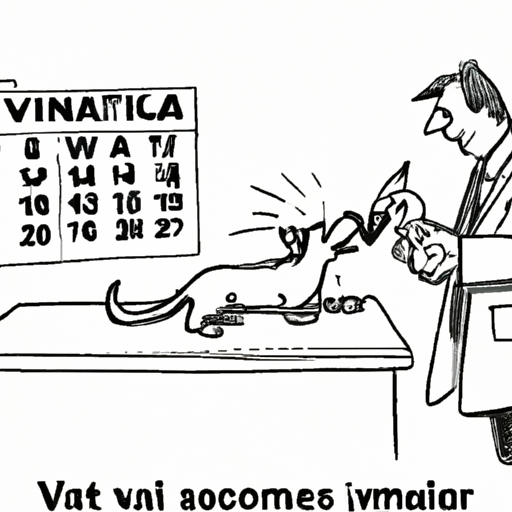As a caregiver, the health and wellbeing of those you care for is your top priority. That’s why when it comes to your furry friend, you want to make sure they’re protected from diseases like rabies.
Understanding Rabies
Rabies is a deadly virus that primarily spreads through bites from infected animals. It can cause inflammation of the brain, leading to severe neurological problems and, ultimately, death. As a caregiver, it’s crucial that you understand the gravity of this disease.
- Transmission: Rabies is spread through an infected animal’s saliva, usually through a bite.
- Symptoms: Symptoms include fever, seizures, paralysis, hydrophobia (fear of water), and change in behavior.
- Prevention: Vaccination is the most effective way to prevent rabies in dogs.
Rabies Vaccination Schedule
The frequency of rabies shots depends on your dog’s age, health status, and local laws. Generally, puppies receive their first rabies shot at 12 to 16 weeks of age. After the first shot, a rabies booster is typically required every year or every three years, depending on the type of vaccine and the laws of your state.
Table: General Rabies Vaccination Schedule
| Age of Dog | Vaccination |
|---|---|
| 12-16 weeks | First rabies shot |
| 1 year after initial shot | Booster shot |
| Every 1-3 years after | Booster shots |
The Importance of Regular Rabies Shots
Getting your dog vaccinated regularly is not just about obedience to the law—it’s about safeguarding the health of your dog, your family, and your community. Here’s why:
- Health: Rabies is almost always fatal once symptoms appear. Regular vaccination is key to prevention.
- Legal Compliance: Most states require dogs to be vaccinated against rabies.
- Public Safety: Vaccinating your dog helps to prevent the spread of rabies to other animals and humans.
Risks and Side Effects
As with any medical procedure, there are potential risks and side effects associated with rabies shots. Most dogs have no problems, but it’s vital to understand the possible reactions.
- Common short-term side effects include fever, sluggishness, and reduced appetite.
- Rarely, dogs can have serious allergic reactions. If your dog has difficulty breathing, facial swelling, or hives after a rabies shot, seek veterinary help immediately.
FAQs
How often do dogs need rabies shots?
After the initial shot at 12 to 16 weeks, and a booster at 1 year, dogs typically need a rabies shot every 1 to 3 years.
Are there any exceptions to this schedule?
Some dogs with chronic health conditions may require a different vaccination schedule. Always consult with your vet for the best course of action.
What if I miss a rabies shot for my dog?
If you miss a shot, get your dog vaccinated as soon as possible. It’s important to keep their immunity up.
In conclusion, as a caregiver, you play a vital role in protecting your dog against diseases like rabies. Regular vaccinations are a key part of this responsibility.



